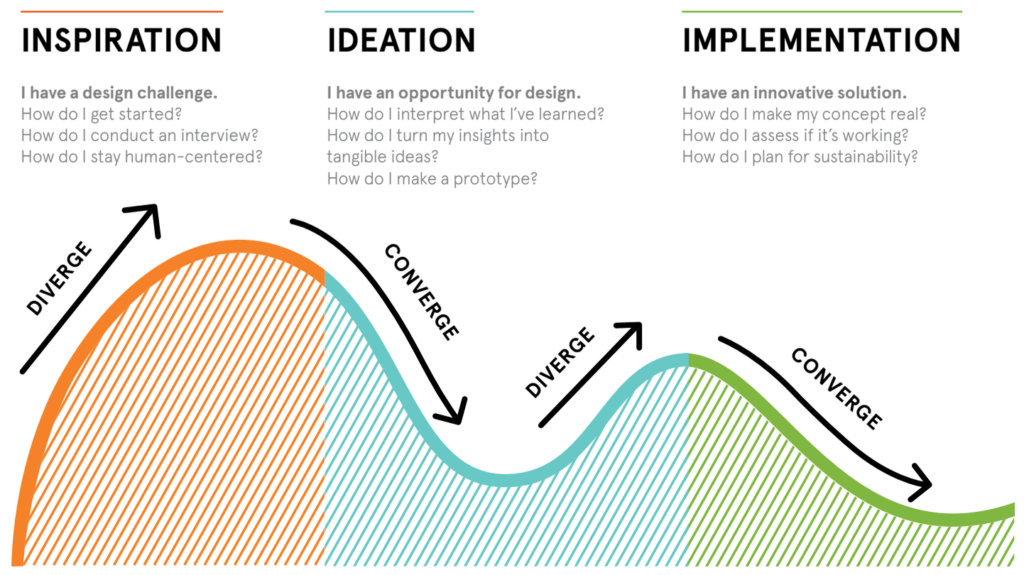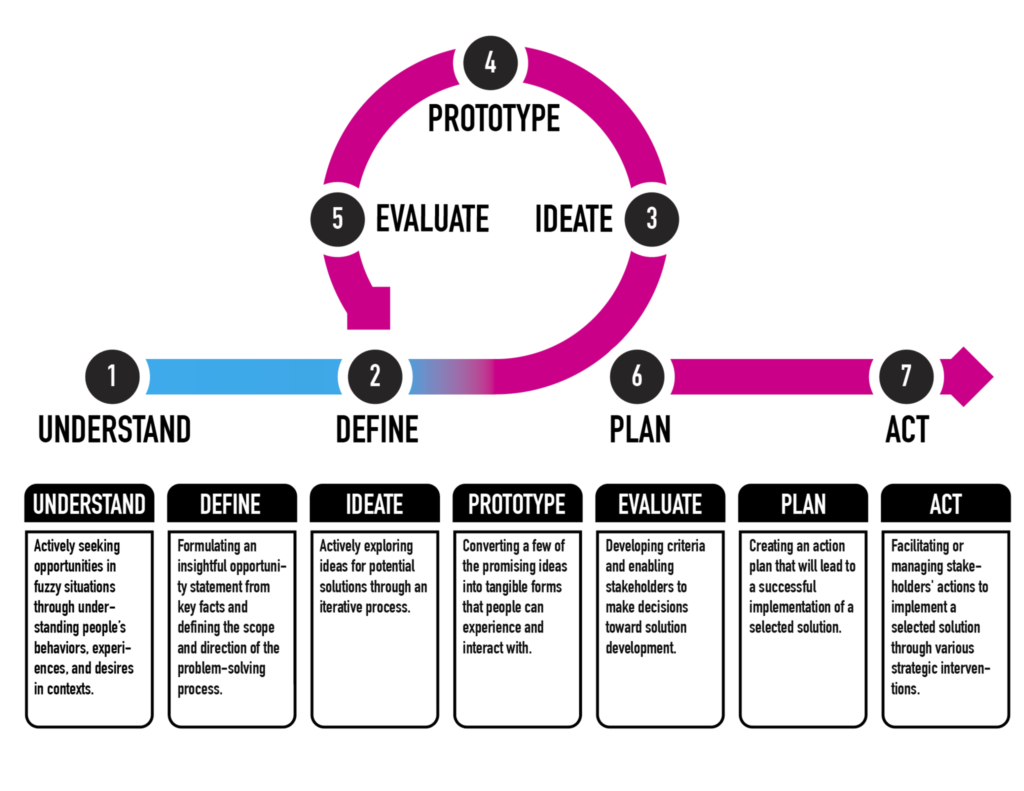Design Research can come in many forms and serve many different purposes. You may be thinking… “what’s the difference between design research and research?” To me, design research describes any research that has the ultimate goal of designing a better way and not just exploring a topic. Service design, product design, experience design and interaction design are all fields that use design research.
In order to conduct effective and innovative design research, a plan of action is followed throughout the process. This “plan of action” can also be referred to as a research plan; a set plan that identifies what methods will be used and when they are most valuable. The notion of process is a familiar concept, but the ability to deconstruct the process into individual steps that articulate the purpose of each method in the grand plan is paramount.
In order to support communication for persuasion or team understanding, design processes are represented by a visual model. There are many well-known process models used in design research. IDEO, the company started by Tim Brown and David Kelley, is a well known Design Thinking consultancy and one of the largest and most successful of its kind. Their model is shown below.

There are many other process models that design consultancies follow. The model that I have followed in my past work is the Herron Design Process model, shown below. This model is broken down into 7 phases and opposed to some other models, this one shows the start and finish of the process while including the importance of iteration. The circle in the middle holds the three steps: ideate, prototype, and evaluation. Iteration during this part of the process fosters creativity and supports innovative solutions.

Another important part of design research is the focus on process skills. In our society it is so common to focus on evaluation without first allowing the exploratory part of the brain some room to develop creative, original ideas. The two process skills, diverge and converge, are a critical part of design research, helping to articulate the importance of timing, and learning to allow our analytical minds the space it needs to generate creative ideas.
During a design research facilitated session, it is important to set up the expectations so that people feel safe to think creatively even when it may seem silly at times. In order to diverge, we must learn to let go of critical thoughts. Diverging means going for quantity of ideas, deferring judgement, and encouraging wild ideas. Alternatively, the process skill of converging is the time to use an agreed set of criteria to make choices and apply more narrow frames in order to make the decisions that move a project or solution forward.